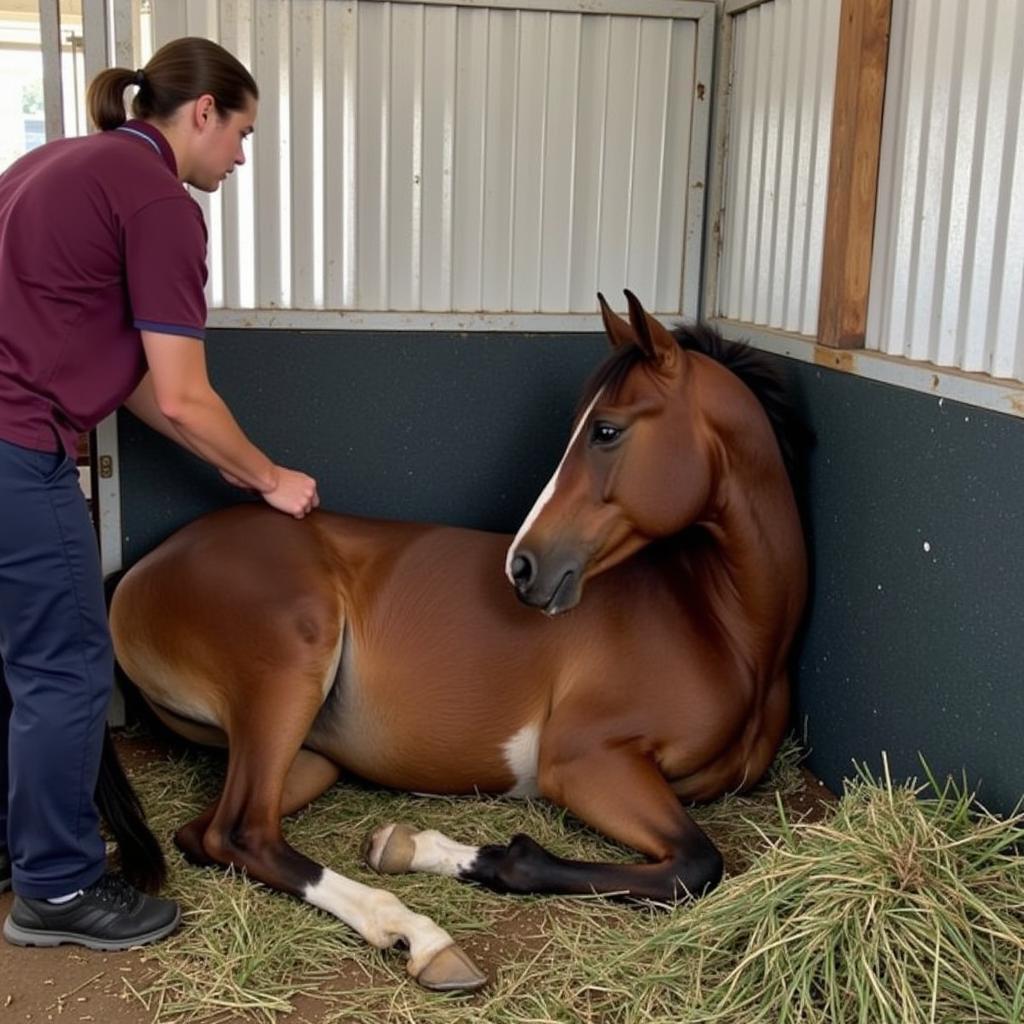Dorms for horses aren’t like college dorms, but the term “dorm” is sometimes used colloquially to refer to sedatives, specifically Dormosedan (detomidine hydrochloride), used to calm horses for various procedures. Understanding the appropriate use of Dormosedan, including its various forms, dosages, and potential side effects, is crucial for ensuring horse safety and well-being.
What is “Dorm” (Dormosedan) for Horses?
Dormosedan is a potent sedative commonly used in equine veterinary practice. It provides reliable sedation and analgesia (pain relief), making it suitable for various procedures, from dental work and wound care to transportation and minor surgeries. However, it’s important to remember that Dormosedan is a prescription medication and should only be administered under the guidance of a qualified veterinarian. They can determine the appropriate dormosedan dosage for horses based on the individual animal’s needs.
Different Forms of Dormosedan for Horses: Gel, Injection, and More
Dormosedan is available in several forms, each with its own advantages and applications. The most common forms include Dormosedan gel dosage for horses, which is administered orally, and Dormosedan injection for horses, which provides a more rapid onset of sedation. Your veterinarian can help you determine which form is best suited for your horse’s specific situation and the procedure being performed. Understanding the different administration methods is essential for safe and effective dorm sedation for horses.
Dormosedan Gel: Oral Administration
Dormosedan gel is a convenient option for oral administration, often preferred for less invasive procedures. The gel is placed on the horse’s tongue, and its palatable nature generally ensures easy acceptance. However, the onset of sedation is slightly slower compared to the injectable form.
Dormosedan Injection: Intramuscular and Intravenous
Dormosedan can also be administered via intramuscular (IM) or intravenous (IV) injection. IV administration results in the fastest onset of sedation, typically within a few minutes. IM injection provides a slightly slower onset but longer duration of action.
Dosage and Administration: Consulting Your Veterinarian is Key
The correct dosage of Dormosedan is crucial for ensuring both effectiveness and safety. Factors such as the horse’s weight, age, temperament, and the specific procedure being performed all influence the appropriate dose. Never attempt to determine the dosage yourself. Always consult with your veterinarian to determine the correct dormosedan dosage for horses. Overdosing can lead to serious complications, including cardiovascular and respiratory issues.
“Determining the correct Dormosedan dosage is a complex process that requires professional expertise,” explains Dr. Emily Carter, DVM, specializing in equine medicine. “A veterinarian can assess the individual needs of each horse and ensure the safe and effective use of this medication.”
Monitoring Your Horse During and After Sedation
Close monitoring is essential during and after Dormosedan administration. Observe your horse for any adverse reactions, such as excessive sweating, muscle tremors, or difficulty breathing. A heart rate monitor horses can be a valuable tool for tracking vital signs during sedation.
 Horse Recovering from Sedation
Horse Recovering from Sedation
Conclusion: Utilizing Dorm (Dormosedan) Responsibly
Dormosedan can be a valuable tool in equine veterinary medicine, facilitating a wide range of procedures. However, responsible use is paramount. Always consult your veterinarian for guidance on appropriate dosage, administration, and monitoring. By understanding the effects and potential risks associated with Dorm For Horses, you can contribute to your horse’s well-being and ensure a positive experience during necessary veterinary procedures.
FAQ
- What are the common side effects of Dormosedan?
- How long does it take for Dormosedan to wear off?
- Can Dormosedan be used in pregnant mares?
- What should I do if my horse experiences an adverse reaction to Dormosedan?
- Can Dormosedan be used in combination with other medications?
- What are the signs of Dormosedan overdose in horses?
- Is there a reversal agent for Dormosedan?
Need help? Contact us at Phone Number: 0772127271, Email: [email protected] Or visit us at QGM2+WX2, Vị Trung, Vị Thuỷ, Hậu Giang, Việt Nam. We have a 24/7 customer service team.